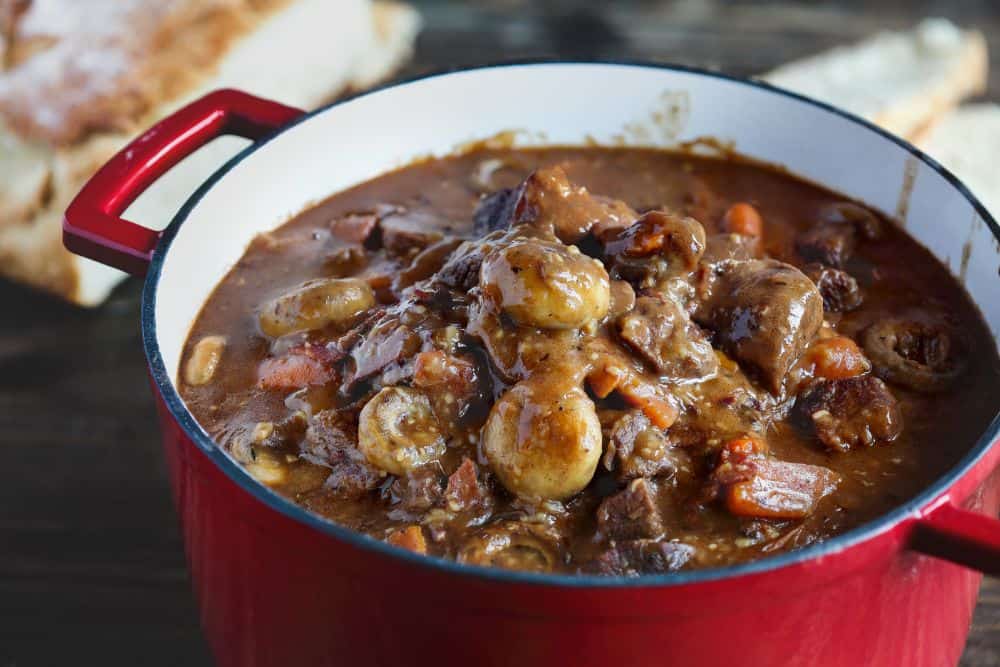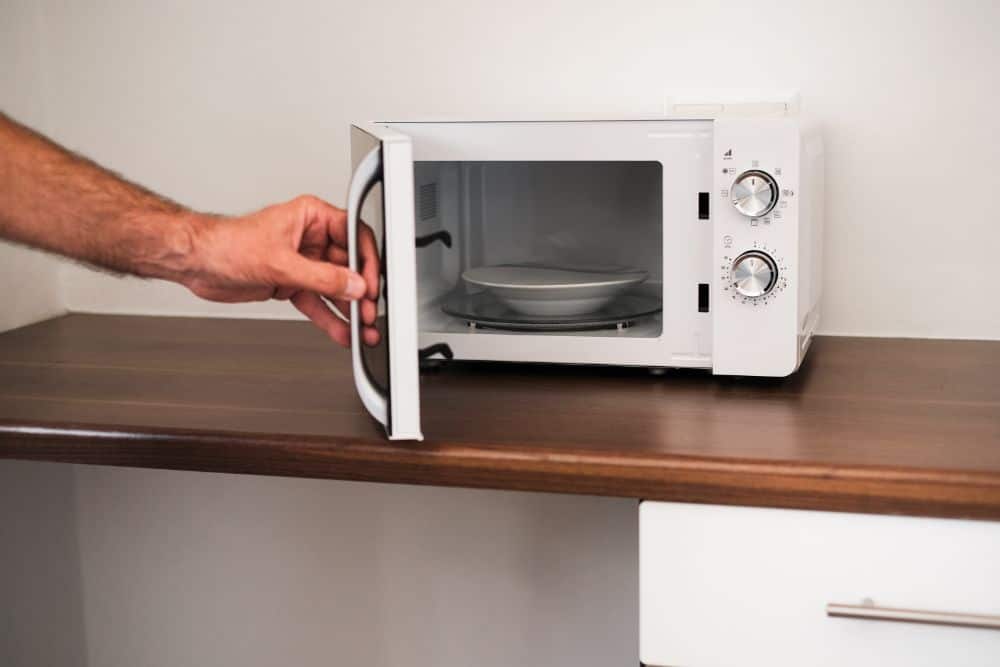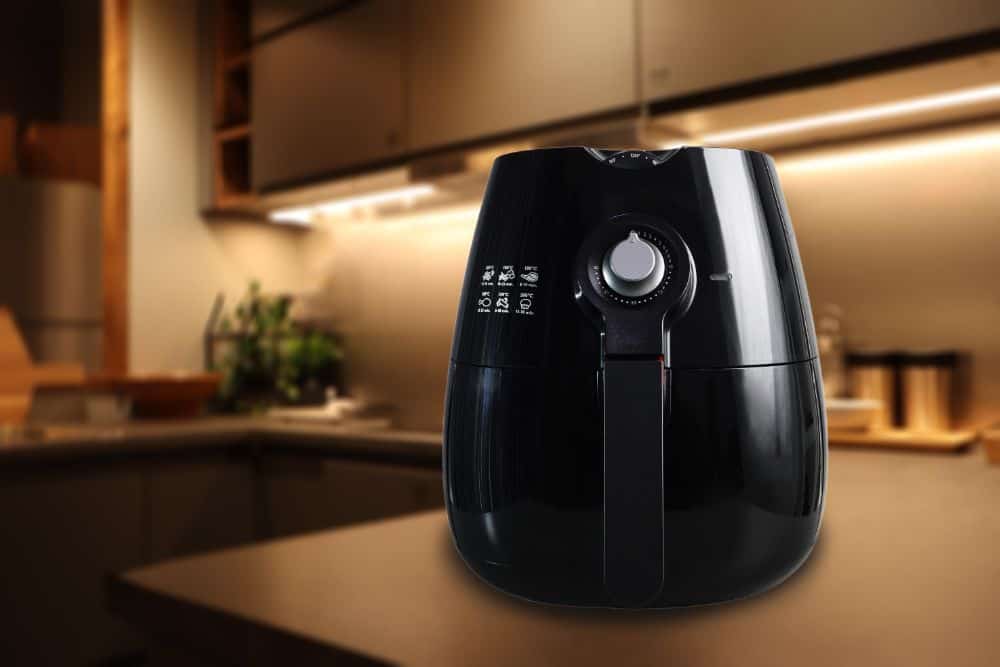From grilling to broiling or roasting, modern ovens can do a lot more than baking. However, finding yourself without an oven means you have to get creative and find another way to cook or reheat food.
Even though convection ovens are a quick and easy way to cook and reheat food, there are many other options to consider if you don’t have access to a traditional oven. Let’s take a closer look at the different substitutes you can use if you don’t have access to a convection oven.
If you don’t have a conventional oven, the easiest solution is often to use a stove. You can use the burners to cook or reheat food, but you might have to adapt the cooking method you’re using.
Using a simple set of skillets, pots, and pans give you access to a wide range of cooking methods, including boiling, frying, sautéing, braising, or searing. You can even use lids to conserve moisture and create an environment where heat can circulate in a way that is similar to a convection oven.
Cooking on a stovetop is different from baking in an oven since there is direct contact between the food and the heat source. Temperature can rise quickly and cause the food to burn.
You can prevent burning by using fat to create a barrier between the food and the heat source, typically with butter or oil.
Typically, unrefined cooking oil has a lower smoke point and is ideal for reheating food without making it dry. If you’re cooking meat and want to use a technique like roasting or stir-frying, opt for cooking oil with a higher smoke point like refined avocado oil or virgin olive oil.
A Dutch oven can be a great alternative to using a traditional oven. These versatile ceramic pots conduct heat in an even manner and create an environment that is similar to a convection oven.
It’s a great option for cooking meat, casseroles, soups, or stews. You can also use a Dutch oven to bake bread, pies, or cakes.
The downside of using a Dutch oven is that the conductive heat can cause the food to stick and burn to the pot if you don’t use some kind of liquid. A lot of Dutch oven recipes call for using sauce, stock, juice, or another type of liquid.

A Dutch Oven on a Stovetop Can Be a Great Option for Heating Food
If you’re using a Dutch oven instead of a traditional oven, you might have to tweak your recipe to add more liquid. If you need to reheat food, add some butter or a few spoons of bouillon stock to prevent the food from becoming too dry.
There are other options you can explore if you have access to burners:
A microwave oven is the easiest way to reheat food if you don’t have access to a traditional oven. The main downside of microwaving your food is that this technique can make your food feel soggy. It’s something you can easily prevent by covering the food or using paper towels to absorb moisture.

Microwaves Can be an Adequate Oven Substitute in Many Cases
Microwave ovens work by emitting electromagnetic waves that cause water molecules to vibrate. When they vibrate, water molecules release energy and heat that cooks or reheats your food.
Instead of absorbing heat from the outside like in a traditional oven, food cooks from the inside out. It’s a viable solution if you don’t have access to a convection oven, but there are a few things to keep in mind.
Cooking with a microwave is more energy-efficient and can take less time. However, you need to use the right dish or container. Look for a microwave-safe plate or dish and try using materials like glass or ceramic that will absorb and transmit heat to help with cooking your food evenly. Avoid plastic since this material can melt if you microwave them for several minutes.
The main problem with microwaving food is that water will evaporate quickly and leave your food dry. The best way to avoid this issue is to add some water or another liquid like juice or stock to your microwave-safe dish.
Even though microwave ovens are a common way of reheating food, you can use these appliances to cook food from scratch.
Cooking raw meat in a microwave is safe as long as the food reaches 145°F for raw beef, pork, and lamb. If you’re making poultry, make sure the food reaches 165°F. It’s best to use a meat thermometer to check.
You should let the meat sit for at least 10 minutes to finish the cooking process and avoid using frozen meat since your microwave might not cook it evenly.
You’ll probably have to do a few tests before finding the right time and settings for cooking in your microwave. Not all appliances have the same specs and power output.
While microwaves are a convenient and versatile option, there are a few foods you shouldn’t cook in a microwave:
A microwave will often be the best option for reheating food.
There are many different kitchen appliances you can use to replace conventional ovens.
Compared to frying food in oil, an air fryer can reduce calories by 70 to 80%. It’s a cooking method that reduces oxidation, and it’s a quick and easy way to reheat leftovers while making them crispy.
It’s a great option for frozen food, vegetables, and small cuts of meat like chicken wings.

Air Fryers are Able to Perform Convection Cooking Just Like Ovens
Instant pots are versatile appliances you can use for rice, stews, soups, and more. Modern instant pots with different cooking modes can typically reach higher temperatures, which makes them a safe option for cooking meat from scratch.
However, if you have a traditional slow cooker, it’s best to use it only to reheat leftovers. Some older appliances don’t produce enough heat and will keep food at a temperature of 40 to 140°F long enough for bacteria to develop.
A popular option among breakfast enthusiasts, electric griddles or smokeless grills provides you with a flat surface that heats up.
It’s a great option for cooking meat, sauteing vegetables, and crisping leftovers. The cooking techniques are similar to what you can do with a skillet, but the food will feel crisper and might cook faster.
If you don’t have a conventional oven in your kitchen, you should look into investing in a toaster oven. These small appliances don’t take up much counter space, and you can find wall ovens if you have a small kitchen.
Toaster ovens don’t have the advanced features you would find in a modern convection oven, and they might reach a lower temperature. However, they’re still a great option for roasting fish and vegetables at a low temperature.
You can even bake cakes or bread if you add a few minutes to the recommended baking time.
There are more creative solutions to explore if you don’t have an oven.
Grilling is a great way to prepare meat and veggies with a unique flavor. Plus, you can use your grill to reheat leftovers and give them a delicious barbecue taste.
There are different appliances you can use to grill food outdoors, from charcoal grills to portable propane grills.
If you don’t have a grill, the next best thing you can do is use a firepit or campfire to cook dinner. There are different techniques you can use to cook food in a firepit:
If you enjoy cooking outdoors, you can build an oven with some bricks and mortar. There are plans available online, and using bricks allows you to build an oven that will get hot enough to make wood-fired pizza.
If you don’t want to build a permanent outdoor oven on your property, you can use clay to . It’s an ancient technique that is easier than you think.
A solar oven concentrates sunlight to create heat in a box that will cook your food. It’s an environmentally-friendly way of cooking food outdoors, and you can purchase a solar cooker or use plans to build your own.
The downside is that cooking can take time, and you’ll need good exposure to sunlight to get your solar oven to reach the desired temperature. It’s a good option for reheating food or cooking raw food as long as you can cut it into small pieces to accelerate the cooking process.
